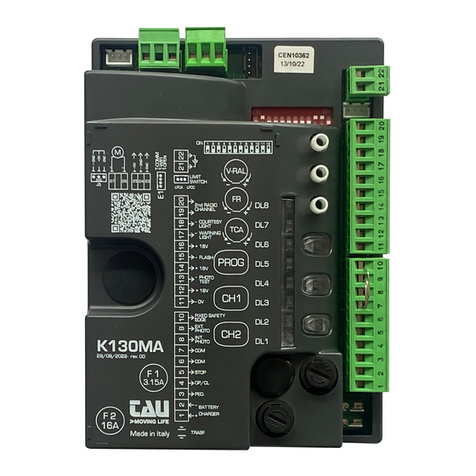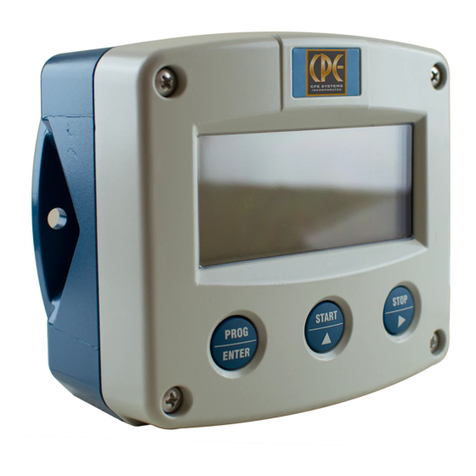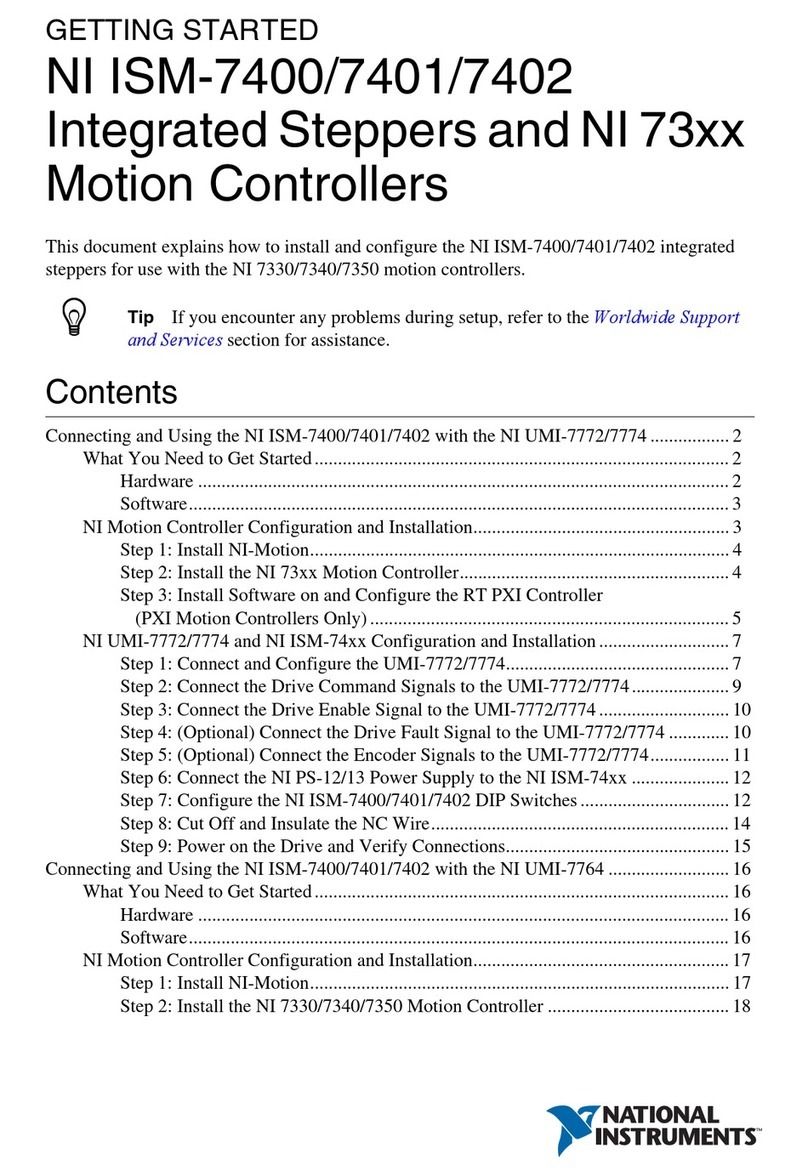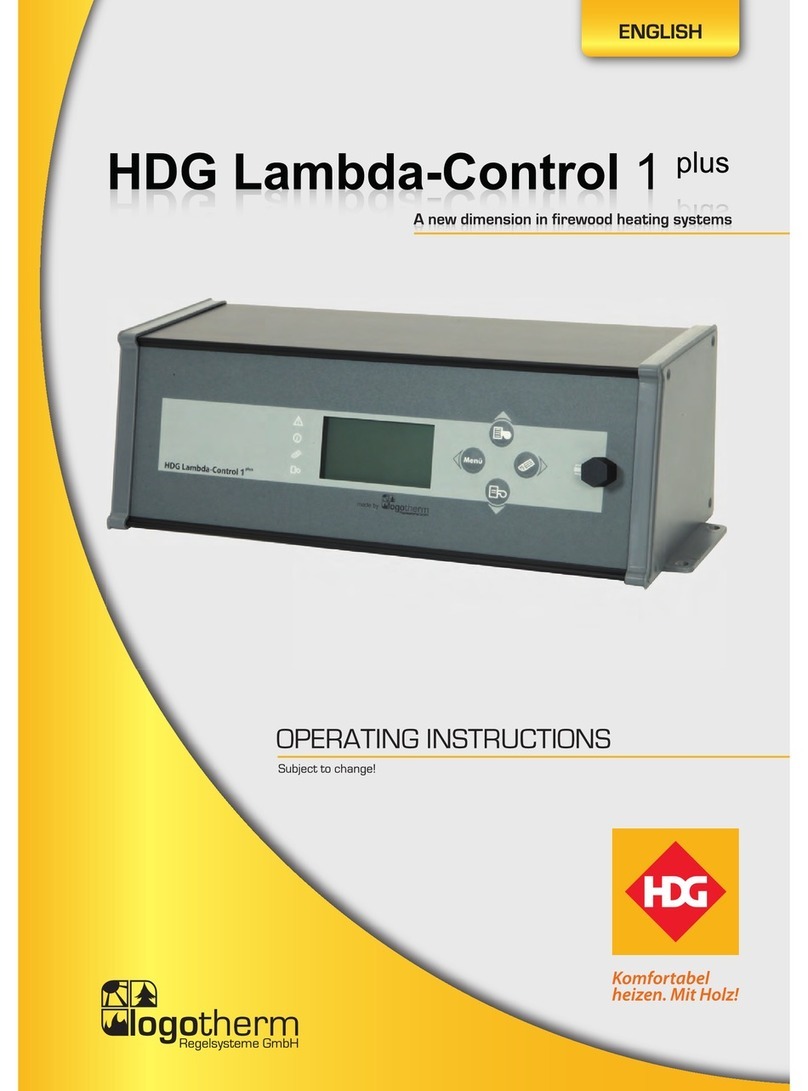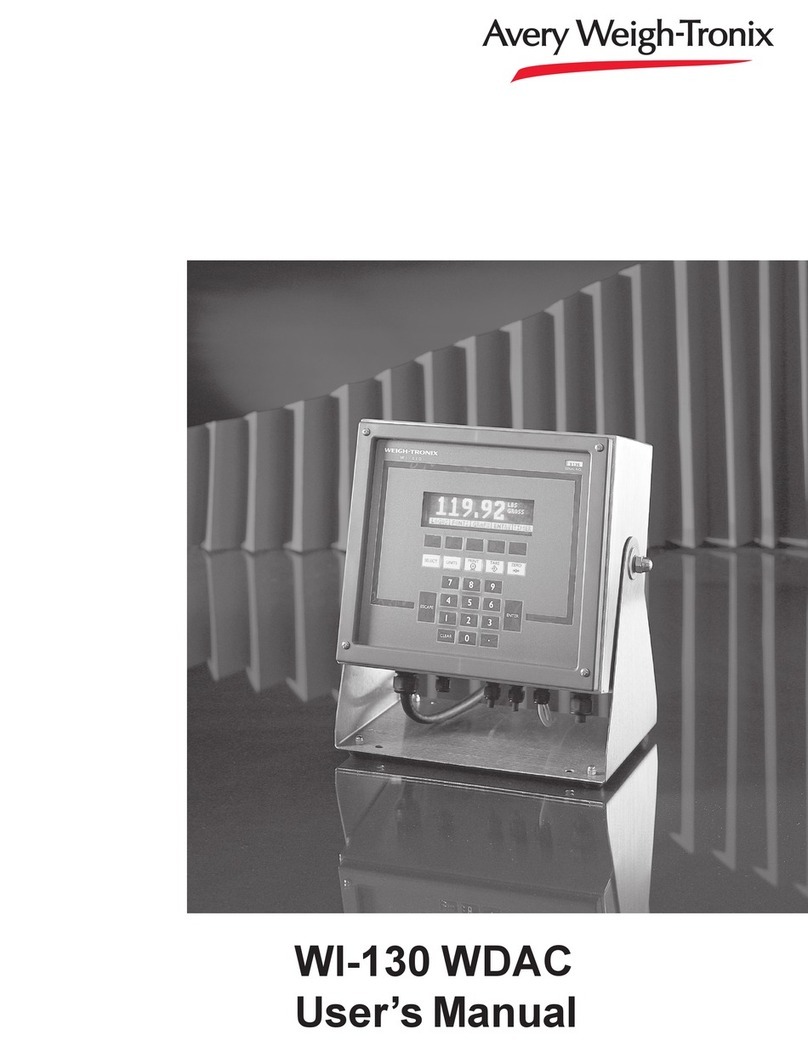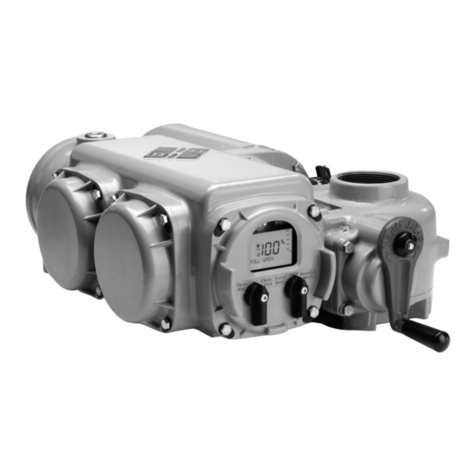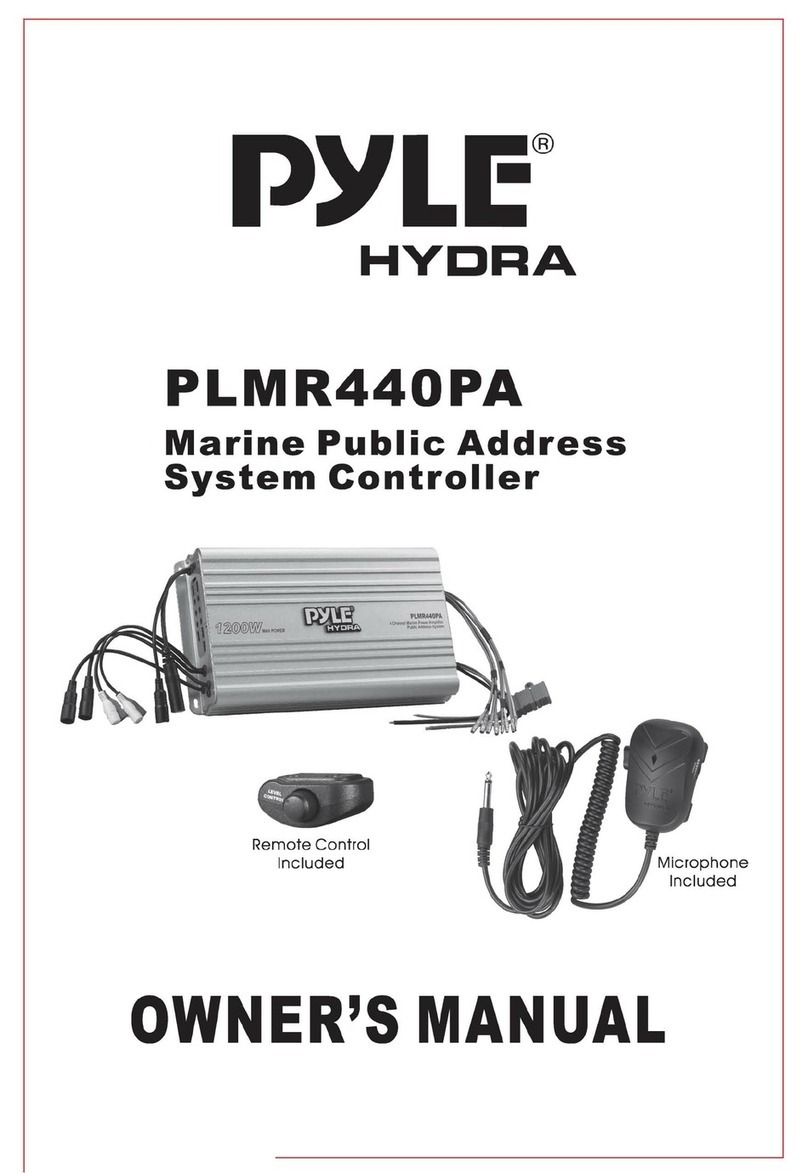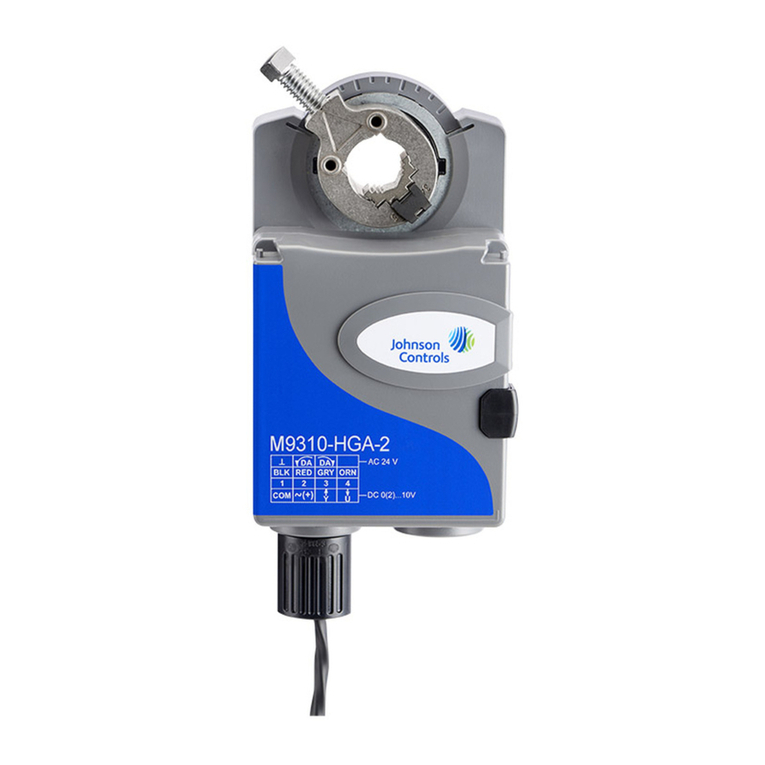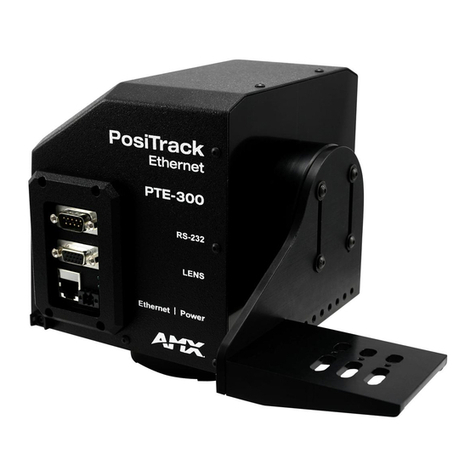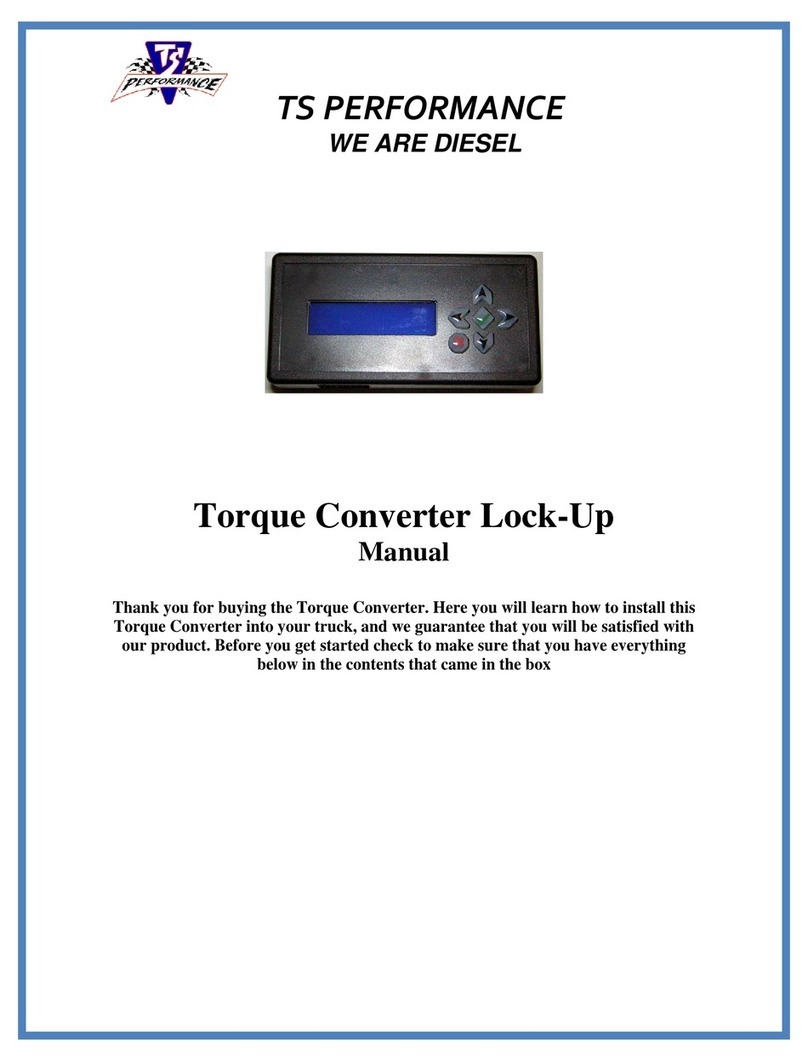tau K892M User manual

1
K892M
Edizione 02 - anno 2007 rev. 02 del 16/02/2007
http://www.tauitalia.com
K892M
TAU srl via E. Fermi, 43 - 36066 Sandrigo (VI) Italia - Tel ++390444750190 - Fax ++390444750376 - E-mail: [email protected]
GUIDA ALL’INSTALLAZIONE
INSTALLATION GUIDE
INSTALLATIONSANLEITUNG
NOTICE D’INSTALLATION
GUÍA PARA LA INSTALACIÓN
SCHEDA COMANDO PER 1 O 2 MOTORI MONOFASE 230 Vac
CONTROL CARD FOR ONE OR TWO 230 Vac SINGLE-PHASE MOTORS
STEUERKARTE FÜR EINEN ODER ZWEI EINPHASIGE 230Vac MOTOREN
CARTE DE COMMANDE POUR UN OU DEUX MOTEURS MONOPHASÉS 230 Vca
TARJETA DE CONTROL PARA UNO O DOS MOTORES MONOFÁSICOS 230 Vac
>ITALIANO
PER PORTE BASCULANTI
>ENGLISH
FOR OVERHEAD DOORS
>DEUTSCH
FÜR SCHWINGTORE
>FRANÇAIS
POUR PORTES BASCULANTES
>ESPAÑOL
PARA PUERTAS BASCULANTES

2
K892M
D-MNL0K892M
Introduzione
Il presente manuale è destinato solamente al personale tecnico qualificato per l’installazione.
Nessuna informazione contenuta nel presente fascicolo può essere considerata d’interesse per
l’utilizzatore finale. Questo manuale è allegato alla centralina K892M, non deve pertanto essere
utilizzato per prodotti diversi!
Avvertenze importanti:
Togliere l’alimentazione di rete alla scheda prima di accedervi.
La centralina K892M è destinata al comando di 1 o 2 motoriduttori elettromeccanici per l’automa-zione
di porte basculanti.
Ogni altro uso è improprio e, quindi, vietato dalle normative vigenti.
È nostro dovere ricordare che l’automazione che state per eseguire, è classificata come “costruzione
di una macchina” e quindi ricade nel campo di applicazione della direttiva europea 98/37/CE (Direttiva
Macchine).
Questa, nei punti essenziali, prevede che:
- l’installazione deve essere eseguita solo da personale qualificato ed esperto;
- chi esegue l’installazione dovrà preventivamente eseguire “l’analisi dei rischi” della macchina;
- l’installazione dovrà essere fatta a “regola d’arte”, applicando cioè le norme;
- infine dovrà essere rilasciata al proprietario della macchina la”dichiarazione di conformità”.
Risulta chiaro quindi che l’installazione ed eventuali interventi di manutenzione devono essere
effettuati solo da personale professionalmente qualificato, in conformità a quanto previsto dalle leggi,
norme o direttive vigenti.
Nella progettazione delle proprie apparecchiture, TAU rispetta le normative applicabili al prodotto
(vedere la dichiarazione di conformità allegata); è fondamentale che anche l’installatore, nel realizzare
gli impianti, prosegua nel rispetto scrupoloso delle norme.
Personale non qualificato o non a conoscenza delle normative applicabili alla categoria dei “cancelli e
porte automatiche” deve assolutamente astenersi dall’eseguire installazioni ed impianti.
Chi non rispetta le normative è responsabile dei danni che l’impianto potrà causare!
Si consiglia di leggere attentamente tutte le istruzioni prima di procedere con l’installazione.
Italiano
Introduction
This manual has been especially written for use by qualified fitters. No information given in this manual
can be considered as being of interest to end users. This manual is enclosed with control unit K892M
and may therefore not be used for different products!
Important information:
Disconnect the panel from the power supply before opening it.
The K892M control unit has been designed to control 1 or 2 electromechanicals gearmotors for
automating overhead doors.
Any other use is considered improper and is consequently forbidden by current laws.
Please note that the automation system you are going to install is classified as “machine construction”
and therefore is included in the application of European directive 98/37/EC (Machinery Directive).
This directive includes the following prescriptions:
- Only trained and qualified personnel should install the equipment;
- the installer must first make a “risk analysis” of the machine;
- the equipment must be installed in a correct and workmanlike manner in compliance with all the
standards concerned;
- after installation, the machine owner must be given the “declaration of conformity”.
This product may only be installed and serviced by qualified personnel in compliance with current,
laws, regulations and directives.
When designing its products, TAU observes all applicable standards (please see the attached
declaration of conformity) but it is of paramount importance that installers strictly observe the same
standards when installing the system.
Unqualified personnel or those who are unaware of the standards applicable to the “automatic gates
and doors” category may not install systems under any circumstances.
Whoever ignores such standards shall be held responsible for any damage caused by the system!
Do not install the unit before you have read all the instructions.
English

3
K892M
Einleitung
Das vorliegende Handbuch ist nur für technisches, zur Installation qualifiziertes Personal bestimmt.
Die im vorliegenden Heft enthaltenen Informationen sind für den Endbenutzer nicht interessant.
Diese Anleitung liegt der Steuerung K892M bei und darf daher nicht für andere Produkte verwendet
werden!
Wichtige Hinweise:
Die Netzstromversorgung vor dem Zugriff zur Schalt- und Steuertafel abschalten.
Die Steuerung K892M dient zum Steuern 1 oder 2 elektromechanischen Getriebemotors für die
Automatisierung Schwingtoren.
Jeder andere Einsatz ist unsachgemäß und daher laut gültiger Vorschriften verboten.
Unsere Pflicht ist, Sie daran zu erinnern, dass die Automatisierung, die Sie ausführen werden, als
„Maschinenkonstruktion“ klassiert ist und daher zum Anwendungsbereich der Europäischen Richtlinie
98/37/EC (Maschinenrichtlinie) gehört.
Nach den wichtigsten Punkten dieser Vorschrift:
- darf die Installation ausschließlich von erfahrenem Fachpersonal ausgeführt werden;
- muss jener, der die Installation ausführt, vorher eine „Risikoanalyse“ der Maschine machen;
- muss die Installation “fachgerecht” bzw. unter Anwendung der Vorschriften ausgeführt sein;
- muss dem Besitzer der Maschine die „Konformitätserklärung” ausgehändigt werden.
Es ist daher offensichtlich, dass Installation und eventuelle Wartungseingriffe nur von beruflich
qualifiziertem Personal in Übereinstimmung mit den Verordnungen der gültigen Gesetze, Normen und
Vorschriften ausgeführt werden dürfen.
Bei der Planung ihrer Apparaturen hält sich TAU an die für das Produkt anwendbaren Vorschriften
(siehe anliegende Konformitätserklärung); von grundlegender Wichtigkeit ist, dass sich auch der
Installateur bei der Durchführung der Anlage genauestens an die Vorschriften hält.
Personal, das nicht qualifiziert ist oder die Vorschriften nicht kennt, die für die Kategorie “automatische
Türen und Tore” anwendbar sind, darf Installationen und Anlagen keinesfalls ausführen.
Wer sich nicht an die Vorschriften hält, haftet für die Schäden, die von der Anlage verursacht werden
können.
Vor der Installation bitte alle Anweisungen genau lesen.
Deutsch
Introduction
Le présent manuel est destiné exclusivement au personnel technique qualifié pour l’installation.
Aucune information contenue dans ce fascicule ne peut être considérée comme intéressante pour
l’utilisateur final. Ce manuel est joint à l’armoire de commande K892M, il ne doit donc pas être utilisé
pour des produits différents !
Recommandations importantes :
Couper l’alimentation électrique de l’armoire avant d’y accéder.
L’armoire de commande K892M est destinée à la commande de 1 ou 2 motoréducteurs
électromécaniques pour l’automatisation de portes basculantes.
Toute autre utilisation est impropre et donc interdite par les normes en vigueur.
Nous nous devons de rappeler que l’automatisation que vous vous apprêtez à exécuter est classée
comme “construction d’une machine” et rentre donc dans le domaine d’application de la Directive
Européenne 98/37/CE (Directive Machines).
Cette directive, dans ses grandes lignes, prévoit que :
- l’installation doit être exécutée exclusivement par du personnel qualifié et expert ;
- qui effectue l’installation devra procéder au préalable à “l’analyse des risques” de la machine ;
- l’installation devra être faite dans les “règles de l’art”, c’est-à-dire en appliquant les normes ;
- l’installateur devra remettre au propriétaire de la machine la ”déclaration de conformité”.
Ilestdoncclairque l’installation etles éventuelles interventionsde maintenance doiventêtre effectuées
exclusivement par du personnel professionnellement qualifié, conformément aux prescriptions des
lois, normes ou directives en vigueur.
Dans le projet de ses appareils, TAU respecte les normes applicables au produit (voir la déclaration
de conformité jointe) ; il est fondamental que l’installateur lui aussi, lorsque qu’il réalise l’installation,
respecte scrupuleusement les normes.
Tout personnel non qualifié ou ne connaissant pas les normes applicables à la catégorie des “portails
et portes automatiques” doit absolument s’abstenir d’effectuer des installations.
Qui ne respecte pas les normes est responsable des dommages que l’installation pourra causer !
Nous conseillons de lire attentivement toutes les instructions avant de procéder à l’installation.
Français

4
K892M
Español
Introducción
Este manual está destinado sólo al personal técnico cualificado para la instalación. Ninguna
información contenida en este manual puede ser considerada interesante para el usuario final.
Este manual acompaña a la central K892M; por lo tanto, ¡no debe utilizarse para otro tipo de
producto!
Advertencias importantes:
Corte la alimentación de red a la tarjeta antes de acceder a ella.
La central K892M está destinada al accionamiento de 1 o 2 motorreductores electromecánicos para
la automatización de puertas basculantes.
Cualquier otro uso es considerado inadecuado y, por consiguiente, está prohibido por las normativas
vigentes.
Es nuestro deber recordarle que la automatización que está por realizar está clasificada como
«construcción de una máquina» y, por consiguiente, entra dentro del campo de aplicación de la
directiva europea 98/37/CE (Directiva de máquinas).
Dicha normativa, en los puntos fundamentales, prevé que:
- la instalación debe ser efectuada sólo por personal cualificado y experto;
- la persona que efectúe la instalación deberá analizar preventivamente los riesgos de la máquina;
- la instalación deberá ser hecha según las reglas del arte, es decir aplicando las normas;
- por último, habrá que expedir al dueño de la máquina la «declaración de conformidad».
Por consiguiente, es evidente que la instalación y los posibles trabajos de mantenimiento deben ser
efectuados por personal cualificado, de acuerdo con cuanto previsto por las leyes, normas y directivas
vigentes.
Durante el diseño de sus equipos, TAU respeta las normativas aplicables al producto (véase la
declaración de conformidad adjunta); también es fundamental que el instalador, al realizar la
instalación, respete escrupulosamente las normas.
Personal no cualificado, o que no conozca las normativas aplicables a la categoría de las «cancelas y
puertas automáticas», debe abstenerse de efectuar instalaciones.
¡Quien no respeta las normativas es responsable de los daños que la instalación podría provocar!
Se aconseja leer con atención todas las instrucciones antes de proceder con la instalación.
INDICE
CONTENTS
INHALTSVERZEICHNIS
INDEX
ÍNDICE
Pag. 6 ITALIANO
Pag. 11 ENGLISH
Pag. 16 DEUTSCH
Pag. 21 FRANÇAIS
Pag. 26 ESPAÑOL
Pag. 31 DICHIARAZIONE CE / KONFORMITÄTSERKLÄRUNG / DECLARATION OF
CONFORMITY / DECLARATlON DE CONFORMITY / DECLARACIÓN DE
CONFORMIDAD
Pag. 32 SCHEMA CABLAGGIO K892M / K892M WIRING DIAGRAM / SCHALTPLAN DER
K892M / SCHÉMA CÂBLAGE K892M / ESQUEMA DEL CABLEADO K892M
Pag. 34 GARANZIA / GARANTIE / GUARANTEE / GARANTIE / GARANTÍA

5
K892M
INSTALLAZIONE
Prima di procedere assicurarsi del buon funzionamento della parte meccanica. Verificare inoltre che il
gruppo motoriduttore sia stato installato correttamente seguendo le relative istruzioni.
L’INSTALLAZIONE DELL’APPARECCHIATURA DEVE ESSERE EFFETTUATA “A REGOLA D’ARTE” DA
PERSONALE QUALIFICATO COME DISPOSTO DALLA LEGGE 46/90.
NB : si ricorda l’obbligo di mettere a massa l’impianto nonché di rispettare le normative sulla sicurezza in vigore
in ciascun paese.
LA NON OSSERVANZA DELLE SOPRAELENCATE ISTRUZIONI PUÒ PREGIUDICARE IL BUON
FUNZIONAMENTO DELL’APPARECCHIATURA E CREARE PERICOLO PER LE PERSONE. PERTANTO, LA
“CASA COSTRUTTRICE” DECLINA OGNI RESPONSABILITÀ PER EVENTUALI MAL FUNZIONAMENTI E
DANNI DOVUTI ALLA LORO INOSSERVANZA.
INSTALLATION
Before proceeding, make sure the mechanical components work correctly. Also check that the gear
motor assembly has been installed according to the instructions.
THE EQUIPMENT MUST BE INSTALLED “EXPERTLY” BY QUALIFIED PERSONNEL AS REQUIRED BY
LAW.
NB : it is compulsory to earth the system and to observe the safety regulations that are in force in each
country.
IF THESEABOVE INSTRUCTIONSARE NOTFOLLOWED IT COULD PREJUDICE THE PROPER WORKING
ORDER OF THE EQUIPMENTAND CREATE HAZARDOUS SITUATIONS FOR PEOPLE. FOR THIS REASON
THE “MANUFACTURER” DECLINES ALL RESPONSIBILITY FOR ANY MALFUNCTIONING AND DAMAGES
THUS RESULTING.
INSTALLATION
Bevor man weitermacht, den korrekten Betrieb des mechanischen Teils überprüfen und konrollieren, ob
der Getriebemotor richtig nach den jeweiligen Anweisungen installiert ist.
DAS GERÄT MUSS GEMÄß GESETZ 46.90 FACHGERECHT VON QUALIFIZIERTEM PERSONAL
INSTALLIERT WERDEN.
N.B.: Bitte beachten Sie, dass die Erdung der Anlage und die Einhaltung der in jedem Land gültigen
Sicherheitsvorschriften Pflicht ist.
DAS NICHTEINHALTEN DER OBEN ANGEFÜHRTEN ANLEITUNGEN KANN DEN EINWANDFREIEN
BETRIEB DES GERÄTS BEEINTRÄCHTIGEN UND GEFAHREN FÜR PERSONEN HERVORRUFEN. DER
HERSTELLER HAFTET DAHER NICHT FÜR BETRIEBSSTÖRUNGEN UND SCHÄDEN, DIE AUF DAS
NICHTEINHALTEN DER ANLEITUNGEN ZURÜCKZUFÜHREN SIND.
INSTALLATION
Avant de procéder, s’assurer du bon fonctionnement de la partie mécanique. Vérifier en outre que le
groupe opérateur a été correctement installé en suivant les instructions correspondantes.
L’INSTALLATION DE L’EQUIPEMENT DOIT ETRE REALISEE “SELON LES REGLES DE L’ART” PAR LE
PERSONNEL COMPETENT AYANT LES QUALITES REQUISES PAR LA LOI.
N.B.: nous rappelons l’obligation de mettre l’installation à la terre et de respecter les normes de sécurité en
vigueur dans le pays d’installation.
LANON OBSERVATION DES INSTRUCTIONS POURRAIT COMPROMETTRE LE BON FONCTIONNEMENT
DE L’APPAREILLAGE ET CREER UN DANGER POUR LES PERSONNES, PAR CONSEQUENT LA
MAISON DECLINE TOUTE RESPONSABILITE POUR D’EVENTUELLES DETERIORATIONS DUES A UNE
UTILISATION NON APPROPRIEE OU NON CONFORMEAU MODE D’EMPLOI.
INSTALACIÓN
Antes de continuar, asegúrese de que la parte mecánica funcione bien. También controle que el grupo
motorreductor esté instalado correctamente siguiendo las instrucciones respectivas.
LAINSTALACIÓN DEL EQUIPO DEBE SER HECHACORRECTAMENTE POR PERSONAL QUE REÚNALOS
REQUISITOS DISPUESTOS POR LA LEY 46/90.
N.B.: se recuerda que es obligatorio conectar a tierra el equipo y respetar las normas de seguridad vigentes
en cada país.
LAINOBSERVANCIADELASINSTRUCCIONESANTEDICHASPUEDEPERJUDICARELFUNCIONAMIENTO
CORRECTO DEL EQUIPO Y CONSTITUIR UN PELIGRO PARA LAS PERSONAS; EL “FABRICANTE” NO SE
CONSIDERA RESPONSABLE POR POSIBLES PROBLEMAS DE FUNCIONAMIENTO Y DAÑOS QUE DE
ELLOS SE DERIVEN.

6
K892M
SCHEDA COMANDO PER UNO O DUE MOTORI MONOFASE 230 Vac PER PORTE
BASCULANTI
• LOGICA CON MICROPROCESSORE
• STATO DEGLI INGRESSI VISUALIZZATO DA LEDs
• PROTEZIONE INGRESSO LINEACON FUSIBILE
• CIRCUITO DI LAMPEGGIO INCORPORATO
• RADIO RICEVITORE 433,92 MHz INTEGRATOA 2 CANALI (CH)
• LIMITATORE DI COPPIAELETTRONICO INCORPORATO
• CONTROLLO ELETTRONICO SPUNTO DI LAVORO
• CONTROLLO DEL BORDO SENSIBILE DI SICUREZZA come da normativa EN 954-1
COLLAUDO
A collegamento ultimato:
¨I Leds verdi LS devono essere tutti accesi (corrispondono ciascuno ad un ingresso
Normalmente Chiuso). Si spengono solo quando sono interessati i comandi ai quali sono
associati.
¨Il Led rosso DL5 LS deve essere spento (corrisponde all’ingresso Normalmente Aperto
APRE/CHIUDE). Si accende solo quando è interessato dal comando cui è associato.
¨Il Led rosso DL7 LS deve essere acceso (fornisce indicazioni durante la programmazione
del radiocomando).
Alimentazione scheda 230 Vac - 50 Hz
Potenza nominale max motori 400 W
Fusibile rapido protezione alimentazione ingresso 230 Vac (F1 - 5x20) F 6,3 A
Tensione circuiti alimentazione motore 230 Vac
Tensione alimentazione circuiti dispositivi ausiliari 24 Vac
Fusibile rapido protezione ausiliari 24 V ac (F2 - 5x20) F 500 mA
Temperatura di funzionamento -20 °C ÷ +70 °C
LED DI DIAGNOSI
DL1 led verde di segnalazione BORDO SENSIBILE
DL2 led verde di segnalazione FINECORSA IN APERTURA
DL3 led verde di segnalazione FINECORSA IN CHIUSURA
DL4 led verde di segnalazione STOP su ingresso esterno (morsetto 17)
DL5 led rosso di segnalazione APRE/CHIUDE
DL6 led verde di segnalazione BORDO SENSIBILE RESISTIVO
DL7 led rosso di segnalazione Indicazioni di programmazione del ricevitore radio
DL8 led verde di segnalazione Stop pulsantiera integrata
Italiano

7
K892M
COLLEGAMENTI ALLA MORSETTIERA
1-2 alimentazione 230 Vac 50 Hz monofase; 1 = Fase, 2 = Neutro;
3-4 uscita luce di cortesia ausiliaria 230 Vac;
5-6 uscita lampeggiante 230 Vac, 20 W max;
7-8 Ingresso antenna per RX 433,92 MHz incorporata; 7= Massa 8= Segnale;
9-10 uscita 2° canale radio;
11-12 uscita 24 V ac per alimentazione dispositivi di sicurezza e/o altro (fotocellule, relè per
luci, etc);
13-15 Ingresso bordo sensibile resistivo; 13 = Bordo sensibile resistivo; 15 = Comune.
Se non si utilizza il bordo sensibile resistivo, non cortocircuitare i morsetti 13 e 15.
L’ingresso si esclude agendo unicamente sul dip 9;
Nota: se si utilizza il bordo sensibile resistivo, collegare la resistenza in dotazione
come da istruzioni allegate.
14-15 Ingresso bordo sensibile (costa fissa) o altri dispositivi di protezione quali ad esempio le
fotocellule (contatto N.C.); 14 = Bordo sensibile; 15 = Comune;
16-17 pulsante Stop contatto N.C. (Normalmente Chiuso). Dopo l’arresto, l’apparecchiatura
riparteaprendosoltantodopouncomandodelpulsantedimarciaodellaradiotrasmittente.
16 = Comune; 17 = Stop;
16-18 ingresso pulsante Apre/Chiude contatto N.A. (Normalmente Aperto): per le modalità
d’uso vedi le funzioni dei dip switch nr. 2-3; 16 = Comune; 18 = Apre/Chiude;
19-20-21 uscita motore (1); 19 = fase chiusura; 20 = comune; 21 = fase apertura;
22-23-24 uscita motore aggiunto (2); 22 = fase chiusura; 23 = comune; 24 = fase apetura;
M5 PIN1 Ingresso pulsante STOP
PIN2 Ingresso pulsante APRE/CHIUDE
PIN3 Comune GND
PIN4 Ingresso FineCorsa di Chiusura
PIN5 Ingresso FineCorsa di Apertura
Nota: se la scheda viene montata in sostituzione di un modello precedente (K595M, K696M,
K797M o K898M) la morsettiera M5 non è presente. Al suo posto c’è una morsettiera da 3
unità a vite, da cablare come segue:
25-26 ingresso Finecorsa di Chiusura (contatto Normalmente Chiuso); 25 = Comune;
25-27 ingresso Finecorsa di apertura (contatto Normalmente Chiuso); 25 = Comune.

8
K892M
REGOLAZIONE LOGICHE
TRIMMER
TCA Trimmer di regolazione del tempo di pausa (5-120 sec), ovvero tempo nel quale la
basculante rimane ferma in apertura a TCA abilitato. Il conteggio inizia al termine del
tempo di lavoro in apertura o al raggiungimento del finecorsa di apertura. Si interrompe
all’arrivo di un comando manuale di chiusura e si disinserisce temporaneamente a un
comando di stop.
TL Trimmer di regolazione tempo di lavoro (0-60 sec), ovvero tempo che la basculante
impiega per compiere un’intera manovra. Il suo conteggio inizia ad ogni impulso di
comando. E’ consigliabile una regolazione di qualche secondo superiore al necessario.
Nota: il tempo di rallentamento è fisso a 15 sec. Con rallentamento inserito,
regolare il TL in modo da eseguire la chiusura completa. Se viene escluso il
rallentamento, diminuire opportunamente il TL per compensare la maggiore
velocità in chiusura.
RCM Selettore a scatti per regolazione della frizione motore, tarabile su 4 diversi livelli di
coppia. Si consiglia la regolazione partendo da un valore minimo ed incrementando se
non sufficiente ad aprire il portone. Si applica così la minima coppia per movimentare il
portone ed un eventuale urto contro cose e/o persone risulta provocare il minor danno.
DIP-SWITCH
n°1 ON: ad apertura completata, la chiusura del cancello è automatica trascorso un tempo
impostato sul trimmer T.C.A.
OFF:la chiusura necessita di un comando manuale.
n°2 ON: ad automazione funzionante, una sequenza di comandi di apertura/chiusura induce
il cancello ad una APERTURA-CHIUSURA-APERTURA-CHIUSURA, ect.
OFF: nelle stesse condizioni, la stessa sequenza di comandi induce il cancello ad una
APERTURA-STOP-CHIUSURA-STOP-APERTURA-STOP (funzione passo passo).
n°3 ON: (no reverse) il cancello ignora i comandi di chiusura durante l’apertura.
OFF: il cancello si comporta come stabilito dal dip switch nr.2.
n°4 ON: la funzione rallentamento è inserita (solo per motori dotati di finecorsa).
OFF: la funzione rallentamento è esclusa.
n°5 ON: pre-lampeggio inserito, ad ogni inizio manovra il lampeggiante funzionerà per circa 3
secondi prima che la porta inizi a muoversi.
OFF: conseguentemente allo start la porta inizierà a muoversi immediatamente.
n°6 ON: la funzione monostabile del relè di comando CH2 (morsetti nr 9 e 10) è inserita.
OFF: la funzione bistabile (o PASSO-PASSO) del relè di comando CH2 (morsetti nr 9 e 10)
è inserita.
n°7 ON: con il dip-switch 6 in ON (funzione monostabile) il contatto N.A. rimane chiuso per
180 sec. (tempo fisso non variabile per il comando temporizzato delle luci).
OFF: con il dip-switch 6 in ON (funzione monostabile) il contatto N.A. rimane chiuso per 2
sec. (tempo fisso non variabile per il comando di una seconda automazione).

9
K892M
n°8 non utilizzato.
n°9 ON: bordo sensibile resistivo inserito.
OFF: bordo sensibile resistivo escluso.
n°10 ON: pulsantiera interna esclusa. I pulsanti di APRE/CHIUDE e STOP sul coperchio
dell’automazione sono esclusi. Non è quindi necessario cortocircuitare alcun
morsetto.
OFF: pulsantiera interna inserita. I pulsanti di APRE/CHIUDE e STOP sul coperchio
dell’automazione sono inseriti.
ATTENZIONE:
Per ogni coppia di morsetti facenti capo ad un contatto N.C. non utilizzato, bisogna effettuare un
cortocircuito per poter garantire il normale funzionamento della scheda.
Solo l’ingresso relativo al bordo sensibile resistivo non deve essere cortocircuitato. L’esclusione del
dispositivo si realizza settando in OFF il dip 9.
L’impianto di massa a terra del portone deve essere conforme alle norme vigenti. La Casa
Costruttrice declina ogni responsabilità per i danni derivanti da eventuali inosservanze in materia.
RADIO RICEVITORE 433,92 MHz INTEGRATO
Il radio ricevitore può apprendere fino ad un max di 8 codici a dip-switches (TXD2, TXD4, BUG2,
BUG4) o rolling code (BUG2R, BUG4R) da impostare liberamente sui due canali.
Il primo canale comanda direttamente la scheda di comando per l’apertura dell’automazione; il
secondo canale comanda un relè per un contatto pulito N.A. in uscita (morsetti nr 9 e 10, max 24
Vac, 1 A).
La modalità di apprendimento (dip-switches o rolling code) viene determinata dal primo
radiocomando e rimarrà la stessa fino alla cancellazione totale di tutti i codici.
APPRENDIMENTO RADIOCOMANDI
P1 = APRE/CHIUDE
P2 = 2° canale
1_ premere brevemente il tasto P1 se si desidera associare un radiocomando alla funzione APRE/
CHIUDE;
2_ il led DL8 si spegne per indicare la modalità di apprendimento dei codici (se non viene immesso
nessun codice entro 10 secondi, la scheda esce dalla modalità di programmazione);
3_ premere il tasto del radiocomando che si desidera utilizzare;
4_ il led DL8 si riaccende per segnalare l’avvenuta memorizzazione (se ciò non accade, attendere
10 secondi e riprendere dal punto 1);
5_ se si desidera memorizzare altri radiocomandi, ripetere la procedura dal punto 1 fino ad un
massimo di 8 trasmettitori;
6_ se si desidera effettuare la memorizzazione sul 2° canale, ripetere la procedura dal punto 1
utilizzando il tasto P2 anzichè il tasto P1;
7_ se si desidera uscire dalla modalità di apprendimento senza memorizzare un codice, premere
brevemente il tasto P1 o il tasto P2.
N.B.: nelcasodisuperamentodelnrmassimodicodici(nr8),illedDL8inizieràalampeggiare
velocemente per circa 3 secondi senza però eseguire la memorizzazione.

10
K892M
CANCELLAZIONE RADIOCOMANDI
1_ tenere premuto per 3 secondi ca. il tasto P1 al fine di cancellare tutti i radiocomandi ad esso
associati;
2_ il led DL8 inizia a lampeggiare lentamente per indicare che la modalità di cancellazione è
attivata;
3_ tenere pemuto nuovamente il tasto P1 per 3 secondi;
4_ il led DL8 si spegne per 3 secondi ca. per poi riaccendersi fisso ad indicare l’avvenuta
cancellazione;
5_ riprendere la procedura dal punto 1 utilizzando il tasto P2 per cancellare tutti i radiocomandi ad
esso associati;
6_ se si desidera uscire dalla modalità di cancellazione senza memorizzare un codice, premere
brevemente il tasto P1 o il tasto P2.
ATTENZIONE: Se si desidera memorizzare un nuovo tipo di telecomando (es: da dip-switches
a rolling code o viceversa) è necessario cancellare entrambi i canali.
MALFUNZIONAMENTI: POSSIBILI CAUSE E RIMEDI
1_ L’automazione non parte
a_ Verificare con lo strumento (Multimetro) la presenza dell’alimentazione 230Vac;
b_ Verificare che i contatti N.C. della scheda siano effettivamente normalmente chiusi (6 led
verdi accesi);
c_ Controllare con lo strumento (Multimetro) che i fusibili siano integri;
2_ Il radiocomando ha poca portata
a_ Collegare l’antenna radio sui morsetti presenti sulla scheda ricevente e non sui morsetti 7-8
della scheda di comando (per frequenza 433,92 MHz);
b_ Controllare che il collegamento della massa e del segnale dell’antenna non sia invertito;
c_ Non eseguire giunzioni per allungare il cavo dell’antenna;
d_ Non installare l’antenna in posizioni basse o in posizioni nascoste dalla muratura o dal pila-
stro;
e_ Controllare lo stato delle pile del radiocomando.
3_ I motori funzionano al contrario
a_ Invertire tra loro i collegamenti del motore sulla morsettiera (morsetti 19 e 21 per il motore 1;
morsetti 22 e 24 per il motore 2);

11
K892M
CONTROL CARD FOR ONE OR TWO 230 Vac SINGLE-PHASE MOTORS FOR
OVERHEAD DOORS
• MICROPROCESSOR-CONTROLLED LOGIC
• INPUT STATUS LED’S
• LINE INPUT FUSE
• BUILT-IN FLASHING LIGHT CIRCUIT
• 433.92 MHz 2 CHANNEL BUILT-IN RADIO RECEIVER (CH)
• INCORPORATED ELECTRONIC TORQUE LIMITER
• ELECTRONIC PEAK LOAD CONTROL
• CONTROL OF THE SENSITIVE EDGE according to the EN 954-1 standard
TESTING
When you have completed the connection:
¨All the green LS LEDs must be on (each of them corresponds to a Normally Closed input). The
go off only when the controls to which they are associated are operated.
¨The red DL5 LS LED must be off (corresponding to the Normally Open OPEN/CLOSE input). It
only comes on when it is activated by the control to which it is associated.
¨The red DL7 LS LED must be on (giving indications during the programming of the radio control
device).
Power input to board 230 Vac - 50 Hz
Max motors nominal power 400 W
Fast acting fuse for protection of input power supply 230 Vac (F1 - 5x20) F 6,3 A
Input voltage of motor circuits 230 Vac
Input voltage of auxiliary circuits 24 Vac
Fast acting fuse for protection of auxiliary circuits 24 V dc (F2 - 5x20) F 500 mA
Working temperature -20°C ÷ +70°C
DIAGNOSTICS LED
DL1 SENSITIVE EDGE green LED signal
DL2 OPEN LIMIT SWITCH green LED signal
DL3 CLOSE LIMIT SWITCH green LED signal
DL4 External input STOP green LED signal (terminal 17)
DL5 OPEN/CLOSE button red LED signal
DL6 PRESSURE-SENSITIVE EDGE green LED signal
DL7 Radio receiver programming red LED signal
DL8 Integrated push button panel Stop green LED signal
English

12
K892M
TERMINAL BOARD CONNECTIONS
1-2 Power input 230Vac, 50Hz, single-phase; 1 = Phase; 2 = Neutral;
3-4 Output for auxiliary courtesy light 230 Vac;
5-6 Flashing light output 230 Vac 20 W max.
7-8 433,92 MHz built-in RX aerial input; 7 = Earth 8 = Signal;
9-10 2
nd radio channel output;
11-12 24 Vac output for powering safety and/or other devices (photocells, relays for lighting,
etc);
13-15 Pressure-sensitive edge input; 13 = Pressure-sensitive edge; 15 = Common.
If the resistive sensitive edge is not used, do not short circuit terminals 13 and 15. The
input is only excluded by means of dip 9;
Note: if the resistive sensitive edge is used, to install the electric resistance
provided as shown in enclosed instruction.
14-15 Input for pressure-sensitive edge (mechanical edge) or other safety devices, e.g.
photocells (NC contact); 14 = pressure-sensitive edge; 15 = Common;
16-17 Stop push button NC (normally closed) contact. After a stoppage, the system always
starts again with an opening phase and only after receiving a command from the On
button or radio transmitter. 16 = Common; 17 = Stop;
16-18 Input for open/close push button (normally-open contact): for usage, see the functions of
dip switches 2-3; 16 = Common; 18 = Open/close;
19-20-21 Motor (1) output; 19 = Closing phase; 20 = Common; 21 = Opening phase;
22-23-24 Auxiliary motor (2) output; 22 = Closing phase; 23 = Common; 24 = Opening phase;
M5 PIN1 Input for STOP push button
PIN2 Input for OPEN/CLOSE push button
PIN3 Common GND
PIN4 Input for closing limit switch FCC
PIN5 Input for opening limit switch FCA
Note: if the card is fitted in replacement of an older model (K595M, K696M, K797M or K898M)
there is no M5 terminal block. In its place is a terminal block with 3 screw units that must be
wired as follows:
25-26 Close limit switch input (Normally Closed contact) FCC; 25= Common;
25-27 Open limit switch input (Normally Closed contact) FCA; 25= Common.

13
K892M
LOGIC ADJUSTMENTS
TRIMMER
TCA Trimmer for adjusting the pause (5-120 sec), or the time the door remains open with the
TCA is enable. The count begins at the end of the operating time for the opening phase
or when reaching the opening limit switch. It stops when a manual closing command is
given and is temporarily disabled when a stop command is given.
TL Trimmer for adjusting operating time (5-120 sec), or the time the overhead door takes to
complete a maneuver. The count begins each time a command is given. It is advisable to
adjust the time to a few seconds longer than is really necessary.
Note: the deceleration time is fixed at 15 seconds. With the deceleration on, adjust
the TL so the complete closure is performed. If the deceleration if off, reduce the
TL as required to compensate the greater speed during closure.
RCM Selector for motor clutch adjustment, it has four positions for adjusting the motor torque
to four different levels. It is advisable to adjust this starting from a minimum value and
increasing said value if it is not sufficient to open the door, thus exerting the minimum
torque needed to move the door so that any accidental bumping against persons or
property will cause the least possible damage.
DIP-SWITCHES
n°1 ON: after opening, the gate automatically closes when the delay set on the T.C.A. trimmer
expires.
OFF:automatic closing disabled.
n°2 ON: with automatic closing enabled, a sequence of open/close commands causes the
gate to OPENCLOSE-OPEN-CLOSE etc.
OFF: in the same conditions, the same command sequence causes the gate to OPEN-
STOP-CLOSESTOP-OPEN-STOP (step-by-step).
n°3 ON: (no reverse) during opening the gate ignores any closing commands.
OFF: the gate’s behavior depends on the position of dip switch No.2.
n°4 ON: the deceleration function is on (for motors with limit switch only).
OFF: the deceleration function is off.
n°5 ON: preflashing enabled, each time the gate is operated the light starts flashing 3 seconds
before the gate begins to move.
OFF: when the gate is started, it will move immediately.
n°6 ON: monostable function of the CH2 control relay (terminals 9 and 10) enabled.
OFF: bistable (or STEP-BY-STEP) function of the CH2 control relay (terminals 9 and 10)
enabled.
n°7 ON: with dip-switch 6 ON (monostable function), the N.O. contact remains closed for 180
secs. (fixed invariable delay for the timed control of the lights).
OFF: with dip-switch 6 ON (monostable function), the N.O. contact remains closed for 2
secs. (fixed invariable delay for commanding a second automatic system).
n°8 not used.

14
K892M
n°9 ON: pressure-sensitive edge on.
OFF: pressure-sensitive edge off.
n°10 ON: internal push-button panel off.The OPEN/CLOSE and STOP buttons on the lid of the
automation are off. Therefore it is not necessary to short circuit the terminals.
OFF: internal push-button panel on. The OPEN/CLOSE and STOP buttons on the lid of the
automation are on.
IMPORTANT:
Each pair of terminals attached to an NC contact that is not in use must be short-circuited in order
to ensure the proper operation of the board.
The input related to the pressure-sensitive edge must not be short circuited. The device is turned
off by setting dip 9 to OFF.
The door’s earthing system must comply with current standards. The manufacturer will accept no
liability for any damage deriving from failure to comply with this requirement.
433.92 MHz BUILT-IN RADIO RECEIVER
The radio receiver can learn up to a maximum of 8 dip-switches (TXD2, TXD4, BUG2, BUG4) or
rolling codes (BUG2R, BUG4R) which can be set on the two channels as required.
The first channel directly commands the control board for opening the automatic device; the second
channel commands a relay for a N.O. no-voltage output contact (terminals 9 and 10, max. 24 Vac,
1 A).
The learning mode (dip-switch or rolling code) is determined by the first radio control device and
remains unchanged until all the codes have been cancelled.
LEARNING SYSTEM FOR RADIO CONTROL DEVICES
P1 = OPEN/CLOSE
P2 = 2nd channel
1_ press button P1 briefly to associate a radio control device with the OPEN/CLOSE function;
2_ LED DL8 turns off to indicate that the code learning mode has been activated (if no code is
entered within 10 seconds, the board exits the programming mode);
3_ press the button of the relative radio control device;
4_ LED DL8 turns on again to indicate that the code has been memorised (if this does not happen,
wait 10 seconds and start again from point 1);
5_ to memorise codes to other radio control devices, repeat the procedure from point 1 up to a
maximum of 8 transmitters;
6_ to memorise codes on the 2nd channel, repeat the procedure from point 1 using button P2
instead of P1;
7_ to exit the learning mode without memorising a code, press button P1 or P2 briefly.
N.B.: if the maximum number of codes (8) is exceeded, LED DL8 flashes rapidly for about 3
seconds without memorising the code.
CANCELLING CODES FROM RADIO CONTROL DEVICES
1_ keep button P1 pressed for 3 seconds in order to cancel all the associated radio control
devices;
2_ LED DL8 flashes slowly to indicate that the cancellation mode has been activated;
3_ press button P1 again for 3 seconds;
4_ LED DL8 turns off for approx. 3 seconds and then remains steady to indicate that the code has
been cancelled;

15
K892M
5_ repeat the procedure from point 1 using button P2 to cancel all the associated radio control
devices;
6_ to exit the learning mode without memorising a code, press button P1 or P2 briefly.
ATTENTION: TO memorise a code on a new type of remote control unit (e.g.: from dip-switch
to rolling code or vice-versa) both channels must be cancelled.
MALFUNCTIONS: POSSIBLE CAUSES AND SOLUTION
1_ The automation does not start
a_ Check there is 230Vac power supply with the multimeter;
b_ Check that the NC contacts of the card are actually normally closed (6 green LEDs on);
c_ Check that the fuses are intact with the multimeter;
2_ The radio control has very little range
a_ Connect the radio aerial to the terminals of the receiver card and not to terminals 7-8 of the
control card (for frequency 433,92 MHz);
b_ Check that the ground and the aerial signal connections have not been inverted;
c_ Do not make joints to increase the length of the aerial wire;
d_ Do not install the aerial in a low position or behind walls or pillars;
e_ Check the state of the radio control batteries.
3_ The motors function in reverse
a_ Invert the motor connections on the terminal block (terminals 19 and 21 for motor 1; termi-
nals 22 and 24 for motor 2);

16
K892M
STEUERKARTE FÜR EINEN ODER ZWEI EINPHASIGE 230Vac MOTOREN FÜR
SCHWINGTORE
• MIKROPROZESSORLOGIK
• STATUSANZEIGE DER EINGÄNGE DURCH LEDs
• SCHUTZ DES LINIENEINGANGS MIT SICHERUNG
• EINGEBAUTER BLINKKREISLAUF
• 433,92 MHz FUNKEMPFÄNGER, EINGEBAUT, 2 KANÄLE (CH)
• EINGEBAUTER ELEKTRONISCHER DREHMOMENTBEGRENZER
• ELEKTRONISCHE ÜBERWACHUNG DES ANLAUFS
• ÜBERWACHUNG DER SICHERHEITSSCHALTLEISTE gemäß der Norm EN 954-1
ENDPRÜFUNG
Nach Beendigung der Anschlüsse:
¨müssen alle grünen LEDs LS leuchten (jede LED entspricht einem gewöhnlich geschlossenen
Eingang). Sie schalten erst ab, wenn die Steuervorrichtungen aktiviert sind, mit denen sie
kombiniert sind.
¨Die rote LED DL5 LS muss ausgeschaltet sein (entspricht dem gewöhnlich geöffneten Eingang
AUF/ZU). Sie leuchtet nur auf, wenn die mit ihr verbundene Schaltvorrichtung aktiviert ist.
¨Die rote LED DL7 LS muss leuchten (sie liefert Hinweise während der Programmierung der
Funksteuerung).
Versorgung der Schalt- und Steuertafel 230 Vac - 50 Hz
Höchstleistung 400 W
Schnellsicherung zum Schutz der Eingangsversorgung 230 Vac (F1 - 5x20) F 6,3 A
Spannung der Motorversorgungskreise 230 Vac
Spannung der Versorgungskreise der Hilfsvorrichtungen 24 Vac
Schnellsicherung zum Schutz der Hilfskreise 24 V dc (F2 - 5x20) F 500 mA
Betriebstemperatur -20°C ÷ +70°C
DIAGNOSTICS LED
DL1 grüne LED für SICHERHEITSLEISTE
DL2 grüne LED für ENDSCHALTER IN ÖFFNUNG
DL3 grüne LED für ENDSCHALTER IN SCHLIEßUNG
DL4 grüne LED für STOPP an externem Eingang (Klemme 17)
DL5 rote LED für Taste AUF/ZU
DL6 grüne LED für RESISTIVE SCHALTLEISTE
DL7 rote LED Programmierungsanweisungen für Funkempfänger
DL8 grüne LED für Stopp durch integrierte Tastatur
Deutsch

17
K892M
ANSCHLÜSSE AM KLEMMENBRETT
1-2 Eingang der Versorgung 230 Vac 50Hz einphasig; 1 = Phase, 2 = Nullleiter;
3-4 Ausgang für die zusätzliche 230 Vac Hoflicht;
5-6 Ausgang für die Blinkleuchte, max. 230 Vac 20 W;
7-8 Eingang für 433,92 MHz Antenne mit eingebautem Empfänger; 7 = Masse 8 = Signal;
9-10 Ausgang für 2. Funkkanal;
11-12 24Vac Ausgang für die Versorgung von Sicherheitsvorrichtungen und/oder anderer
(Fotozellen, Relais für Lichter, usw.);
13-15 Eingang für resistive Schaltleiste; 13 = resistive Schaltleiste; 15 = gemeinsamer Leiter.
Die Klemmen 13 und 15 nicht kurzschließen, wenn man die resistive Schaltleiste nicht
benutzt. Der Eingang schließt sich einzig und allein durch Betätigung von Dip 9 aus;
Vermekung: bei Anwendung einer Sicherheits KontaktLeiste, mitgelieferter
ohmscher Widerstand wie auf Bauanleitung anschließen.
14-15 Eingang für Schaltleiste (feste Leiste) oder andere Schutzvorrichtungen wie zum Beispiel
Fotozellen (NC-Kontakt); 14 = Schaltleiste; 15 = gemeinsamer Leiter;
16-17 Stopptaste NC-Kontakt (normal geschlossen). Nach demAnhalten startet die Apparatur
erst nach einem Befehl mit der Starttaste oder dem Funksender. 16 = gemeinsamer
Leiter; 17 = Stopp;
16-18 Eingang für Taste Auf/Zu; NO-Kontakt (normal geöffnet). Für den Gebrauch siehe die
Funktionen der Dip-Switches Nr. 2-3; 16 = gemeinsamer Leiter; 18 = Auf/Zu;
19-20-21 Ausgang für Motor (1); 19 = Schließung; 20 = gemeinsamer Leiter; 21 = Öffnung;
22-23-24 Ausgang für Zusatzmotor (2); 22 = Schließung; 23 = gemeinsamer Leiter; 24 =
Öffnung;
M5 PIN1 Eingang für Taste STOPP
PIN2 Eingang für Taste AUF/ZU
PIN3 gemeinsamer Leiter GND
PIN4 Eingang für Endschalter in Schließung
PIN5 Eingang für Endschalter in Öffnung
Anmerkung: falls die Steuerkarte anstelle eines früheren Modells montiert wird (K595M,
K696M, K797M oder K898M), ist das Klemmenbrett M5 nicht vorhanden. An seiner Stelle
befindet sich ein Klemmenbrett mit 3 Einheiten, das festgeschraubt wird und wie folgend
verdrahtet werden muss:
25-26 EingangfürEndschalterinSchließung(normalgeschlossenerKontakt);25=gemeinsamer
Leiter;
25-27 Eingang für Endschalter in Öffnung (normal geschlossener Kontakt); 25 = gemeinsamer
Leiter.

18
K892M
EINSTELLUNG DER LOGIK
TRIMMER
TCA Trimmer zur EinstellungderPausezeit (5-120Sek.)bzw.der Zeit, inderdas Schwingtorin
Öffnungmit aktiviertemTCAstehenbleibt.Die Zählung beginnt am Ende der Betriebszeit
in Öffnung oder bei Erreichung des Endschalters in Öffnung. Sie unterbricht sich bei
Empfang eines manuellen Schließbefehls und schaltet sich bei einem Stoppbefehl
vorübergehend aus.
TL Trimmer zur Einstellung der Betriebszeit (0-60 Sek.) bzw. der Zeit, die das Schwingtor
benötigt, um eine ganze Bewegung auszuführen. Die Zählung beginnt bei jedem
Steuerimpuls. Es wird empfohlen, den Trimmer auf ein paar Sekunden mehr als nötig
einzustellen.
Anmerkung: Die Verlangsamungszeit ist fix 15 Sekunden. Bei eingeschalteter
Verlangsamung muss TL so geregelt werden, dass eine vollständige Schließung
ausgeführt wird. Falls man die Verlangsamung ausschließt, TL entsprechend
reduzieren, um die höhere Schließgeschwindigkeit auszugleichen.
RCM 4-Stellen-Schalter zur Einstellung der Motorkupplung auf 4 verschiedenen
Drehmomentstufen. Es wird empfohlen, das Drehmoment auf den Mindestwert zu stellen
und zu erhöhen, falls für das Öffnen des Tors nicht ausreichend. Man wendet so das zur
Torbewegung notwendige minimale Drehmoment an und ein eventueller Stoß gegen
Personen und/oder Gegenstände ist weniger gefährlich.
DIP SWITCH
n°1 ON: nach der vollständigen Öffnung erfolgt die Schließung desTors nach der mit Trimmer
T.C.A. eingestellten Zeit auf automatische Weise.
OFF:die automatische Wiederschließung ist abgeschaltet.
n°2 ON: unter denselben Bedingungen verursacht dieselbe Reihe an Steuerbefehle
ÖFFNUNGSCHLIEßUNG-ÖFFNUNG-SCHLIEßUNG, usw.
OFF: bei funktionierender Automatisierung verursacht eine Reihe Auf-Zu-Steuerbefehlen
ÖFFNUNG-STOPSCHLIEßUNG-STOP-ÖFFNUNG-STOP (Funktion Schrittbetrieb).
n°3 ON: (no reverse) das Tor ignoriert den Schließbefehl während der Öffnung.
OFF: das Tor verhält sich wie von Dip-Switch Nr. 2 bestimmt.
n°4 ON: die Funktion Verlangsamung ist eingeschaltet (nur für Antrieben mit Endschalter).
OFF: die Funktion Verlangsamung ist ausgeschaltet.
n°5 ON: Vorwarnung eingeschaltet; bei jedem Bewegungsbeginn wird die Blinkleuchte ca. 3
Sekunden vor Bewegungsbeginn des Tors blinken.
Off: infolge des Starts wird sich das Tor sofort bewegen.
n°6 ON: die monostabile Funktion des Steuerrelais CH2 (Klemmen Nr. 9 und 10) ist
eingeschaltet.
OFF: die bistabile Funktion (oder SCHRITTBETRIEB) des Steuerrelais CH2 (Klemmen Nr.
9 und 10) ist eingeschaltet.
n°7 ON: mit Dip-Switch 6 auf ON (monostabile Funktion) bleibt der NO-Kontakt 180
Sekunden lang geschlossen (fixe, nicht veränderbare Zeit für die Zeitgebung der
Beleuchtung).
OFF: mit Dip-Switch 8 auf ON (monostabile Funktion) bleibt der NO-Kontakt 2 Sekunden
lang geschlossen (fixe, nicht veränderbare Zeit für die Steuerung einer zweiten
Automatisierung).

19
K892M
n°8 nicht Verwendet.
n°9 ON: resistive Schaltleiste eingeschaltet.
OFF: resistive Schaltleiste ausgeschaltet
n°10 ON: interne Tastatur ausgeschaltet. Die Tasten AUF/ZU und STOPP auf dem Deckel der
Automatisierung sind ausgeschaltet. Das Kurzschließen von Klemmen ist daher nicht
notwendig.
OFF: interne Tastatur eingeschaltet. Die Tasten AUF/ZU und STOPP auf dem Deckel der
Automatisierung sind eingeschaltet.
ACHTUNG:
Für jedes Klemmenpaar, an dem ein nicht benutzter NC-Kontakt endet, muss ein Kurzschluss aus-
geführt werden, damit die Steuerkarte normal funktioniert.
Nur der Eingang der resistiven Schaltleiste darf nicht kurzgeschlossen sein. Der Ausschluss der
Vorrichtung erfolgt durch die Einstellung von Dip 9 auf OFF.
Die Erdungsanlage des Tors muss den gültigen Vorschriften entsprechen. Die Herstellerfirma
übernimmt keinerlei Haftung für Schäden infolge der Nichtbeachtung der diesbezüglichen
Vorschriften.
EINGEBAUTER 433,92 MHz FUNKEMPFÄNGER
Der Funkempfänger kann bis zu max. 8 Dip-Switch-Codes (TXD2, TXD4, BUG2, BUG4) oder
Rolling Codes (BUG2R, BUG4R) erlernen, die beliebig an den beiden Kanälen einzustellen sind.
Der erste Kanal steuert die Steuerkarte zur Öffnung der Automatisierung direkt, der zweite Kanal
steuert ein Relais für einen im Ausgang potentialfreien NO-Kontakt (Klemmen Nr. 9 und 10, max
24 Vac, 1 A).
Der Erlernungsmodus (Dip-Switches oder Rolling Code) wird durch die erste Funksteuerung
bestimmt und bleibt so, bis alle Codes gelöscht werden.
ERLERNUNG DER FUNKSTEUERUNGEN
P1 = ÖFFNET/SCHLIEßT
P2 = 2. Kanal
1_ kurz auf Taste P1 drücken, wenn man einer Funksteuerung die Funktion ÖFFNET/SCHLIEßT
zuordnen will;
2_ die LED DL8 erlischt, um anzuzeigen, dass man sich im Modus Codeerlernung befindet
(wird innerhalb von 10 Sekunden kein Code eingegeben, so geht die Steuerkarte aus der
Programmierung heraus);
3_ auf die Taste der Funksteuerung drücken, die man benutzen will;
4_ die LED DL8 leuchtet wieder auf, um die erfolgte Speicherung anzuzeigen (andernfalls 10
Sekunden warten und ab Punkt 1 wiederholen);
5_ wenn man andere Funksteuerungen speichern will, das Verfahren ab Punkt 1 wiederholen, bis
zu max. 8 Sendern;
6_ wenn man die Speicherung am 2. Kanal ausführen will, das Verfahren ab Punkt 1 wiederholen,
aber statt Taste P1 die Taste P2 verwenden;
7_ wenn man den Erlernungsmodus ohne Speichern eines Codes verlassen will, kurz auf Taste P1
oder P2 drücken.
N.B.: wird die Höchstzahl an Funksteuerungen (Nr. 8) überschritten, so wird die LED DL8
ca. 3 Sekunden lang schnell blinken, ohne eine Speicherung auszuführen.

20
K892M
LÖSCHEN VON FUNKSTEUERUNGEN
1_ ca. 3 Sekunden lang auf Taste P1 drücken, um alle ihr zugeordneten Funksteuerungen zu
löschen;
2_ die LED DL8 beginnt ein langsames Blinken, um anzuzeigen, das der Modus Löschen aktiviert
ist;
3_ Taste P1 3 weitere Sekunden gedrückt halten;
4_ die LED DL8 erlischt ca. 3 Sekunden und leuchtet dann wieder fest auf, um anzuzeigen, dass
das Löschen ausgeführt ist;
5_ das Verfahren ab Punkt 1 an Taste P2 wiederholen, um alle ihr zugeordneten Funksteuerungen
zu löschen;
6_ wenn man den Löschmodus ohne Löschen eines Codes verlassen will, kurz auf Taste P1 oder
P2 drücken.
ACHTUNG: Wenn man einen neuen Typ einer Funksteuerung speichern will (z.B. von Dip-
Switches auf Rolling Code oder umgekehrt) müssen beide Kanäle gelöscht werden.
BETRIEBSSTÖRUNGEN: MÖGLICHE URSACHEN UND ABHILFEN
1_ Kein Start der Automatisierung
a_ Mit einem Multimeter prüfen, ob die 230 Vac Versorgung vorhanden ist.
b_ Prüfen, dass die NC-Kontakte der Steuerkarte effektiv gewöhnlich geschlossen sind (6 grü-
ne LEDs eingeschaltet);
c_ Die Sicherungen mit dem Multimeter kontrollieren;
2_ Funksteuerung mit wenig Reichweite
a_ Die Funkantenne an den Klemmen auf der Empfängerkarte anschließen, nicht an den Klem-
men 7-8 der Steuerkarte (für 433,92 MHz Frequenz);
b_ Prüfen, dass der Anschluss der Masse und desAntennesignals nicht umgekehrt ist;
c_ Zur Verlängerung des Antennekabels keine Verbindungen ausführen;
d_ Die Antenne nicht zu niedrig oder durch Mauern oder Pfeiler versteckt installieren;
e_ Den Zustand der Batterien in der Funksteuerung überprüfen.
3_ Verkehrter Drehsinn der Motoren
a_ Die Anschlüsse des Motors am Klemmenbrett untereinander umkehren (Klemmen 19 und
21 für Motor Nr. 1; Klemmen 22 und 24 für Motor Nr. 2);
Other manuals for K892M
1
Table of contents
Languages:
Other tau Controllers manuals
Popular Controllers manuals by other brands
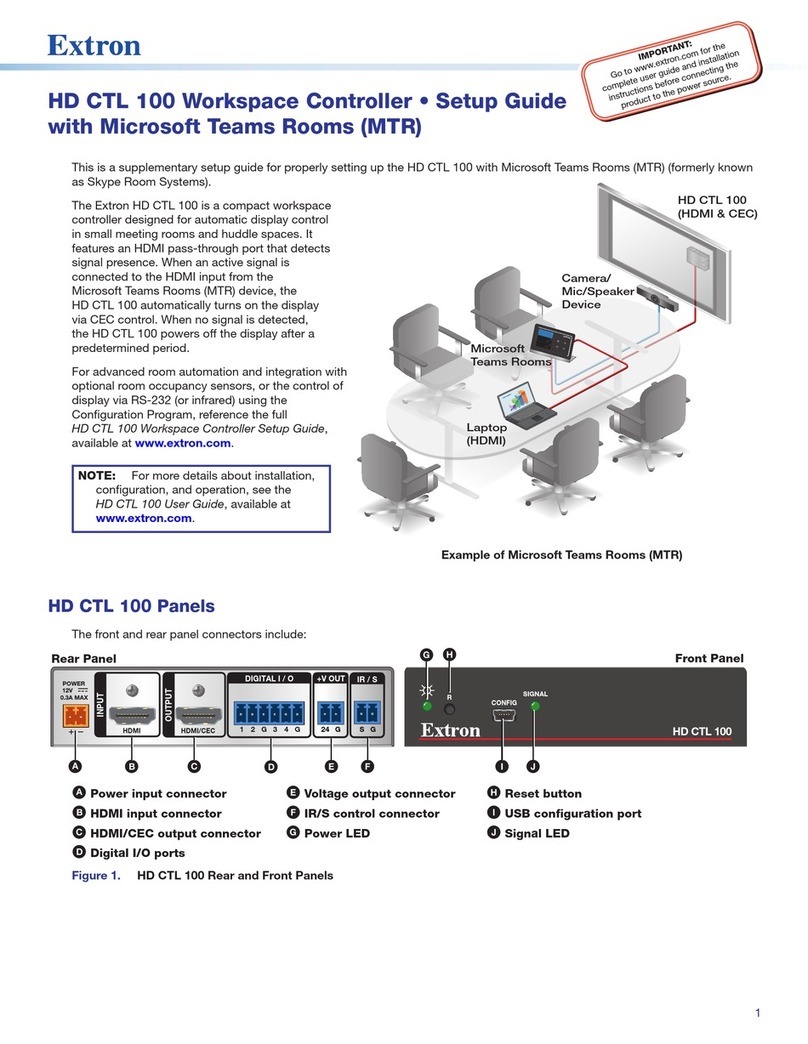
Extron electronics
Extron electronics HD CTL 100 Setup guide
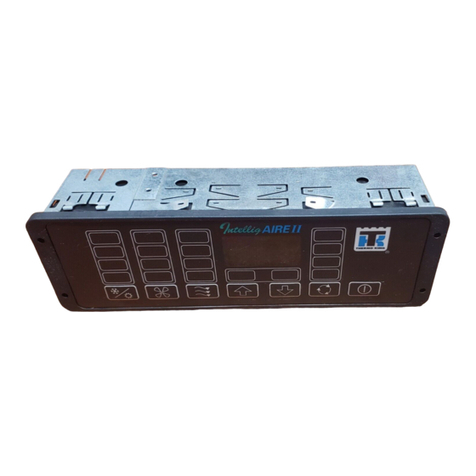
Thermo King
Thermo King IntelligAIRE II Operator's manual
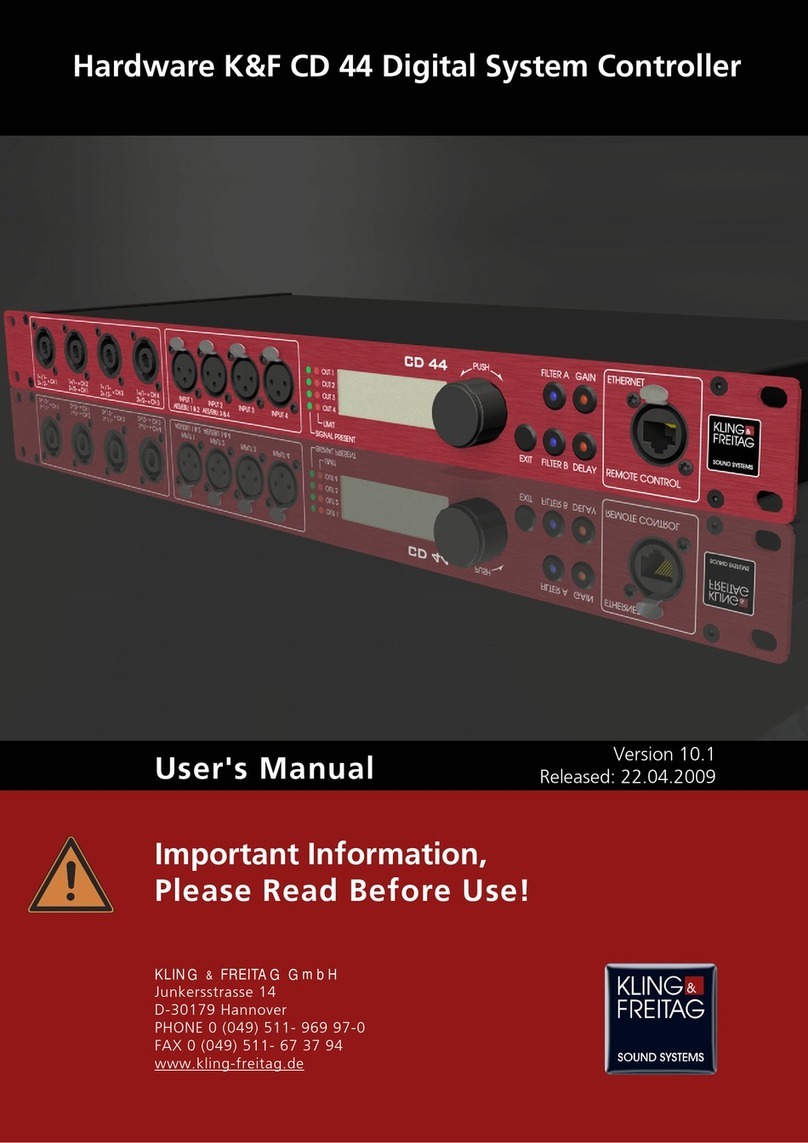
KLING & FREITAG
KLING & FREITAG CD 44 user manual
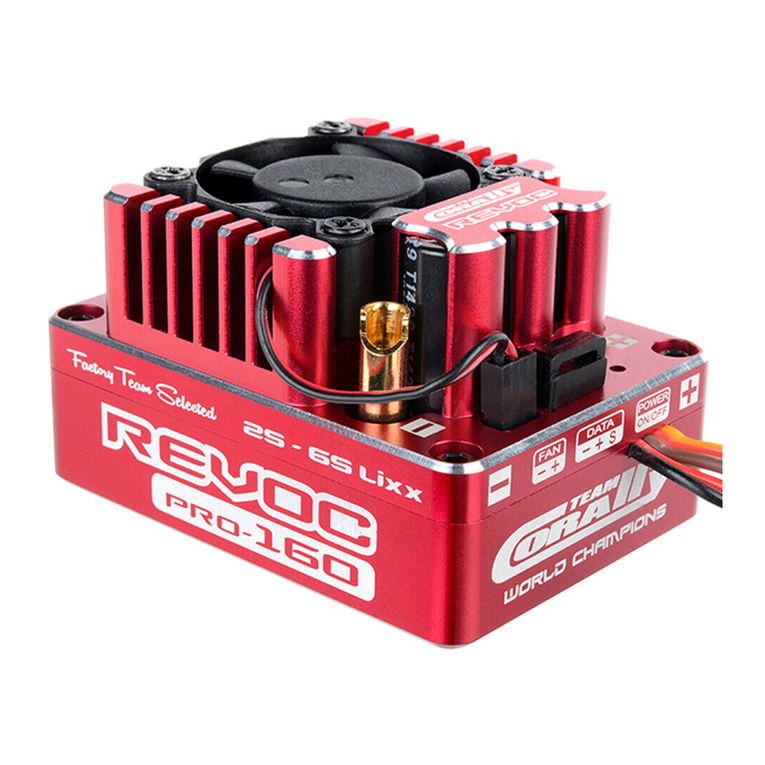
Team Corally
Team Corally REVOC PRO 160 user manual
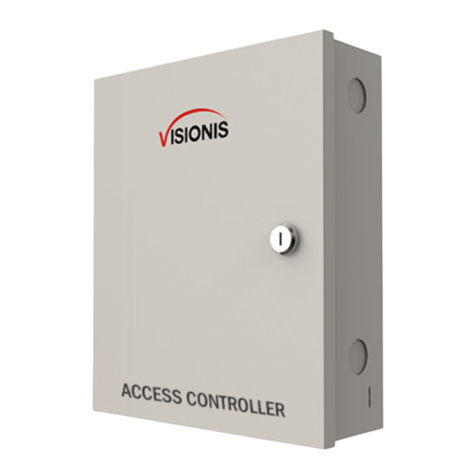
Visionis
Visionis VS-AXESS-2ETL installation manual
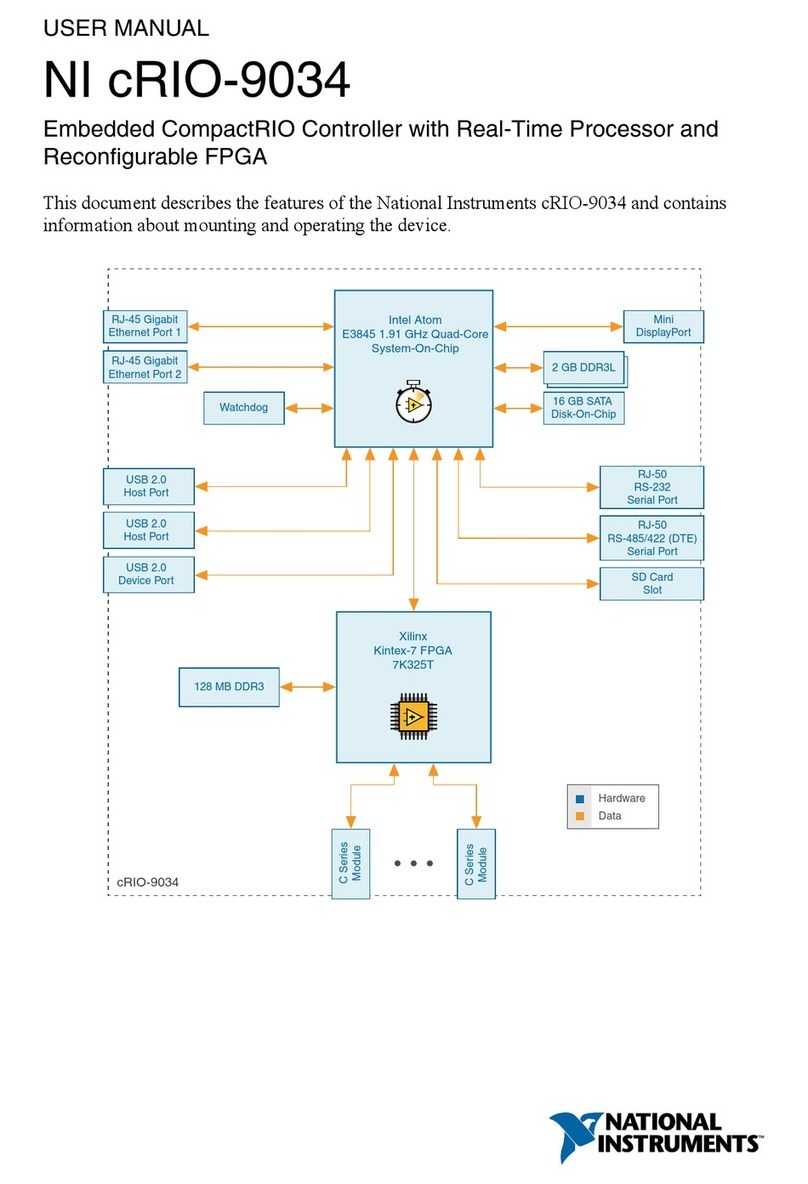
National Instruments
National Instruments cRIO-9034 user manual
